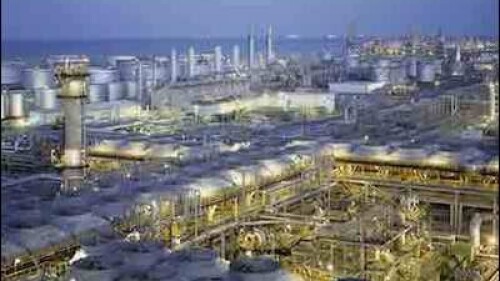The recent slump in oil prices has sent gasoline prices below $3 a gallon, leading many Americans to believe that our energy predicament is a vestige of the past. Decades of anxiety over our dependency on Middle Eastern oil with all its economic and geopolitical trappings are giving way to a new era of complacency in our energy discourse. This growing exuberance might diminish public appetite for the newly elected Congress and the Obama Administration to pursue energy policies aimed at breaking oil’s stronghold over our transportation sector. After all, if it ain’t broke, why fix it? But such a euphoric mindset could lead to painful consequences down the road.
In the life of every commodity there are periods of ups and downs. Oil is no different. Just like a combination of circumstances – a stronger dollar, increased supply from the U.S. and Libya, and tapering demand in the developed world - have brought about the recent price drop, a different set of drivers can lead to the exact opposite outcome. A cut in OPEC production, trouble in one or more major oil exporting countries, or a slowdown in North American production due to lower prices could reverse the recent trend, sending oil prices back to the three digit level. Predicting future prices is a loser’s game but even optimists would concur that any one of these three scenarios has a good chance of materializing in the foreseeable future.
A combination of circumstances – a stronger dollar, increased supply from the U.S. and Libya, and tapering demand in the developed world - have brought about the recent price drop. |
OPEC’s recent decision against cutting crude output reveals what might lie ahead. The cartel, whose members mostly need triple digit prices to balance their budgets, essentially decided to keep prices low for now in order undermine the North American oil industry. When asked if the organization has an answer to rising US production OPEC Secretary General Abdullah Al-Badri confirmed OPEC was in a battle over market share with America: “We answered,” he said, “We keep the same production.” But while rich Persian Gulf producers can weather the storm, poorer oil exporters like Nigeria, facing contentious elections in February 2015 or Venezuela, already in a state of economic disarray, could be easily destabilized as a result of insufficient income and their production could disappear from the market for months.
Another unknown is how long North American oil producers will be able to remain competitive at sub-$70 price level especially because soon they could face headwind from an unexpected quarter. Provided the U.S. economy continues to recover, which becomes more likely with low energy prices, at some point in 2015 the Fed will begin to raise interest rates, marking the beginning of the of the era of easy money. This spells trouble for the capital intensive oil industry. Higher interest rates would make debt more expensive for American producers, cutting deeper and deeper into their profit margins - Energy debt is already the biggest component of the US junk bond market. Under such unfavorable conditions more and more producers will be forced to cap their wells and prices will begin to rebound.
At that point other factors might come into play On the demand side there is China, which despite slowing down still grows its automobile population by 12-14 percent annually. China produces today one fourth of the world’s vehicles and its vehicle fleet is projected to grow from 90 million cars today to surpass the U.S. fleet of 220 million in less than a decade. All these cars do not run on milk.
On the supply side, we will soon realize the impact of low oil prices on oil investments in the Middle East, where production costs are the lowest in the world. Even when oil prices were over $100 the Middle East accounted for only 15 percent of the total investment in oil and gas production. Low oil prices eroded the figure even further. Lower investment today means less oil tomorrow and hence higher price.
The convergence of these factors can again drive oil prices to a level in which they trigger economic recession as was the case in 1974, 1979, 1991, 2000 and 2008 – an average of once a decade. To shield the economy from the ruinous impact of future spikes in oil prices it is necessary for cars to be able to run on fuels derived from other energy commodities – coal, natural gas, biomass – in addition to, or instead of petroleum. This way, if oil returns to unfriendly territory consumers will be able to shift to cheaper fuels and hence drag the price back to equilibrium. All that is needed for this to happen is for automakers to be offered an option to reduce their fuel economy obligation – 54.5 miles per gallon by 2025 – if they open most of their cars to some sort of fuel competition, whether through flex fuel engines, electric motors, natural gas engines, fuel cells etc. The abundance of choice enabling vehicles would give rise to choice in fuels and this would be the only possible insurance policy Washington can provide the American people for the next time the oil market flips.
Gal Luft is co-director of the Institute for the Analysis of Global Security (IAGS), senior adviser to the United States Energy Security Council, and a fellow at the Middle East Forum.







